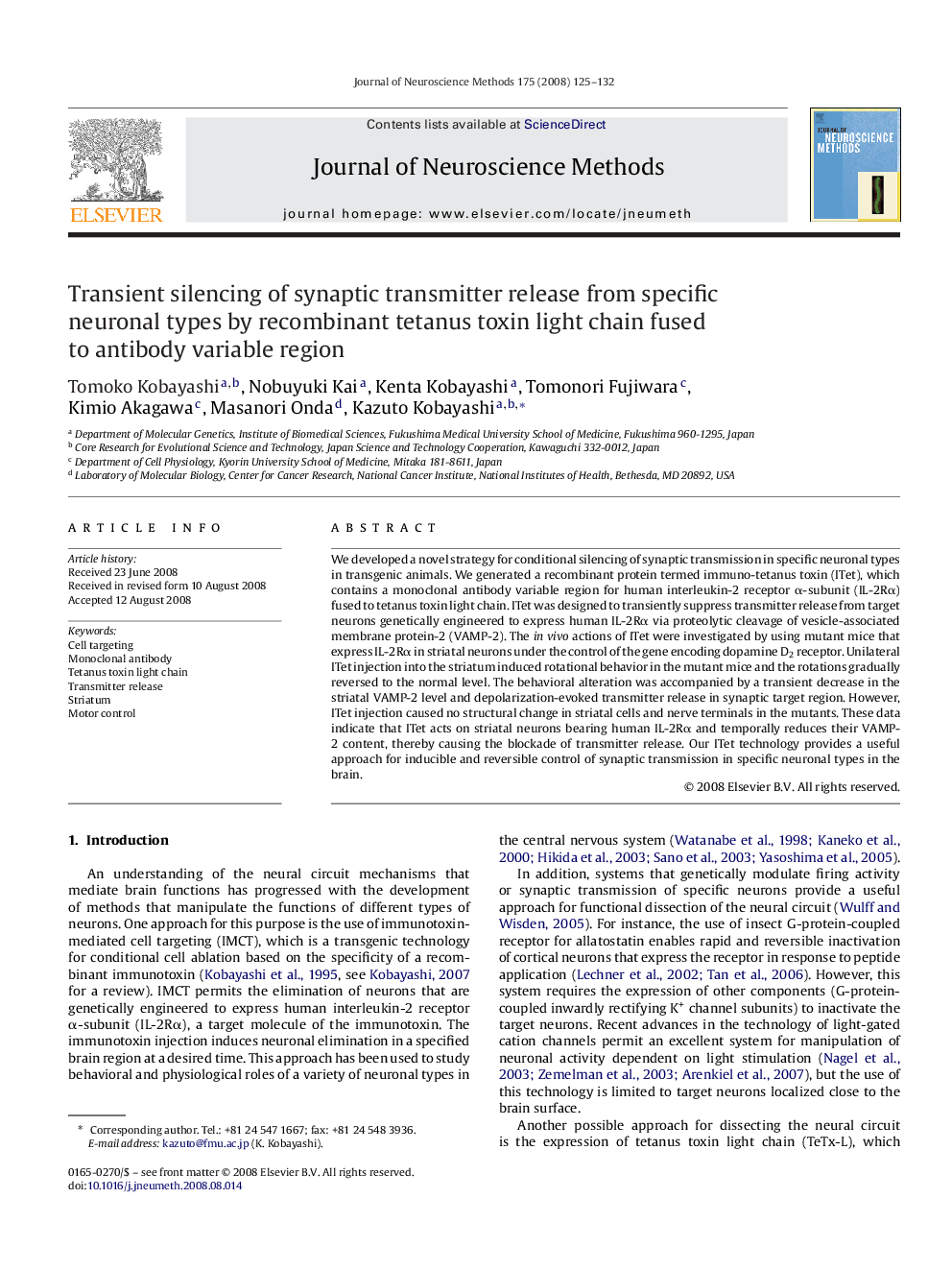| Article ID | Journal | Published Year | Pages | File Type |
|---|---|---|---|---|
| 4336139 | Journal of Neuroscience Methods | 2008 | 8 Pages |
Abstract
We developed a novel strategy for conditional silencing of synaptic transmission in specific neuronal types in transgenic animals. We generated a recombinant protein termed immuno-tetanus toxin (ITet), which contains a monoclonal antibody variable region for human interleukin-2 receptor α-subunit (IL-2Rα) fused to tetanus toxin light chain. ITet was designed to transiently suppress transmitter release from target neurons genetically engineered to express human IL-2Rα via proteolytic cleavage of vesicle-associated membrane protein-2 (VAMP-2). The in vivo actions of ITet were investigated by using mutant mice that express IL-2Rα in striatal neurons under the control of the gene encoding dopamine D2 receptor. Unilateral ITet injection into the striatum induced rotational behavior in the mutant mice and the rotations gradually reversed to the normal level. The behavioral alteration was accompanied by a transient decrease in the striatal VAMP-2 level and depolarization-evoked transmitter release in synaptic target region. However, ITet injection caused no structural change in striatal cells and nerve terminals in the mutants. These data indicate that ITet acts on striatal neurons bearing human IL-2Rα and temporally reduces their VAMP-2 content, thereby causing the blockade of transmitter release. Our ITet technology provides a useful approach for inducible and reversible control of synaptic transmission in specific neuronal types in the brain.
Keywords
Related Topics
Life Sciences
Neuroscience
Neuroscience (General)
Authors
Tomoko Kobayashi, Nobuyuki Kai, Kenta Kobayashi, Tomonori Fujiwara, Kimio Akagawa, Masanori Onda, Kazuto Kobayashi,
